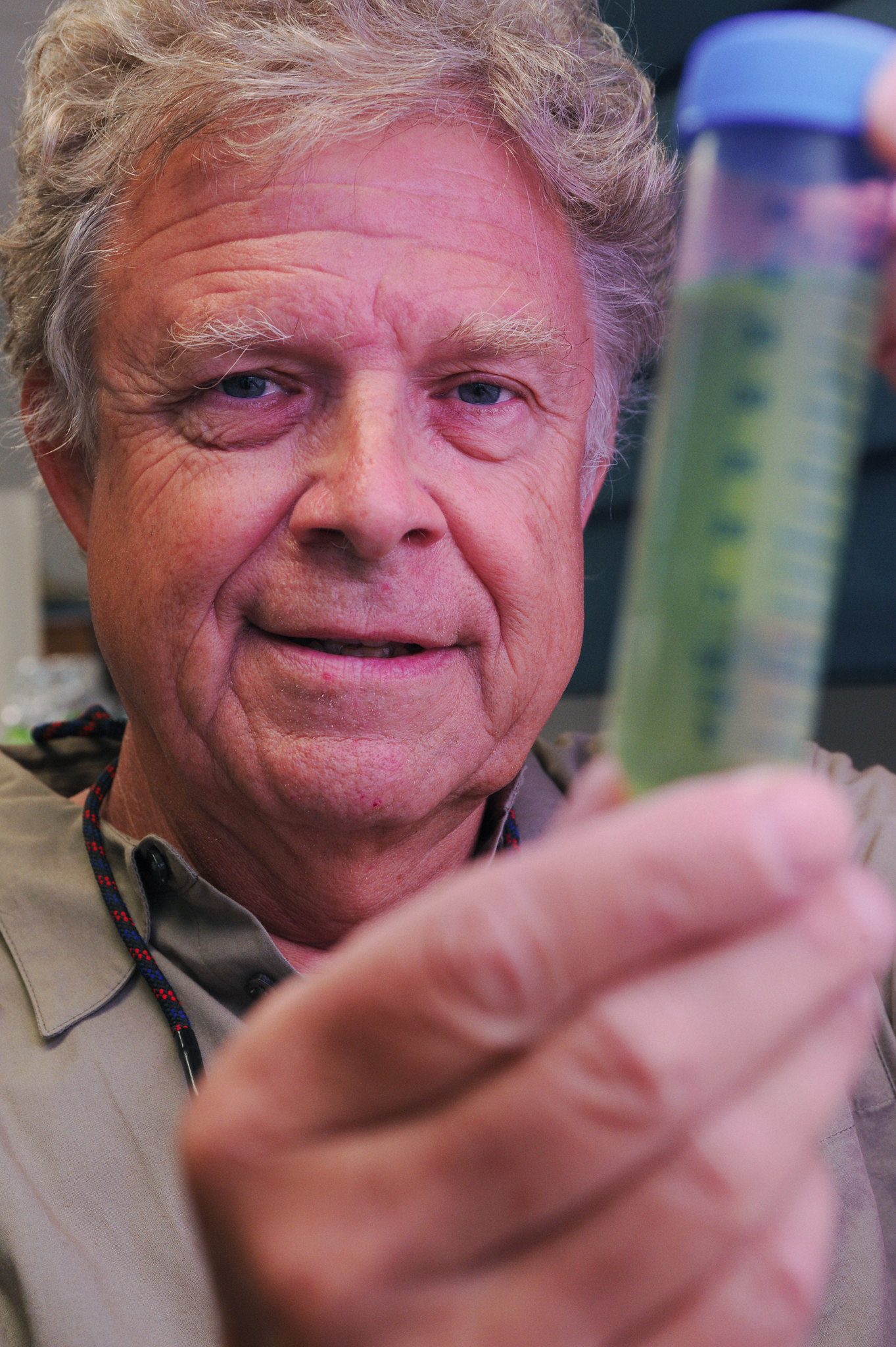NC Sea Grant-Funded Scientist Receives Best Paper Honor
BY SUMMER WALLS
The Environmental Science & Technology journal has recognized “Mitigating the Expansion of Harmful Algal Blooms across the Freshwater-to-Marine Continuum” as one of the “Best Papers of 2018.” Hans W. Paerl, an aquatic ecologist at the UNC-Chapel Hill Institute of Marine Sciences, led a team that conducted groundbreaking research on nutrient over-enrichment and its negative effects on coastal ecosystems.

Excess nutrients in water bodies and resulting harmful algal blooms, known as HABs, have increased across Europe and North America, with negative effects on fisheries, tourism and property values. Paerl and his co-authors have conducted innovative work on the proliferation of excess nutrients, called “eutrophication,” and HABs in North Carolina’s waters. A North Carolina Sea Grant project is cited in the honored paper, along with international research.
“Our North Carolina Sea Grant projects are addressing causes and consequences of expanding algal blooms in the estuaries, especially their impacts on low oxygen conditions and food web alterations,” Paerl says.
Large-scale agriculture, industrialization and urbanization, as well as rising temperatures and extreme weather events, all contribute to harmful algal blooms — as does how slowly water flows.
“North Carolina estuarine and inland waters are susceptible to HABs because they are nutrient enriched and have long residence times,” Paerl says. “In other words, they are poorly flushed. The combination of high nutrient loads and long residence times are optimal for bloom development and proliferation.”
Paerl’s research explored a new strategy that focused on reducing both phosphorous and nitrogen levels upstream in order to control HABs long-term. The team’s award-winning article also explains approaches that can prevent the spread of HABs worldwide, especially in the freshwater-to-marine system.
“My work has focused on linking freshwater with marine eutrophication, especially the causes and consequences,” Paerl explains. “Clearly these systems are connected, and if we are to start reversing the troubling trend of HAB expansion, we need to address the problem at a watershed-and-airshed-to-coastal scale.”
The American Chemical Society first announced Paerl’s win at the Great Achievements in Environmental Science & Technology symposium earlier this month. His coauthors are Timothy G. Otten of Bend Genetics and Raphael Kudela of Ocean Sciences & Institute for Marine Sciences at the University of California Santa Cruz.
In addition to North Carolina Sea Grant, the North Carolina Water Resources Research Institute also has funded Paerl’s research on water quality in the state.
Read the full article, “Mitigating the Expansion of Harmful Algal Blooms across the Freshwater-to-Marine Continuum”
- Categories:


